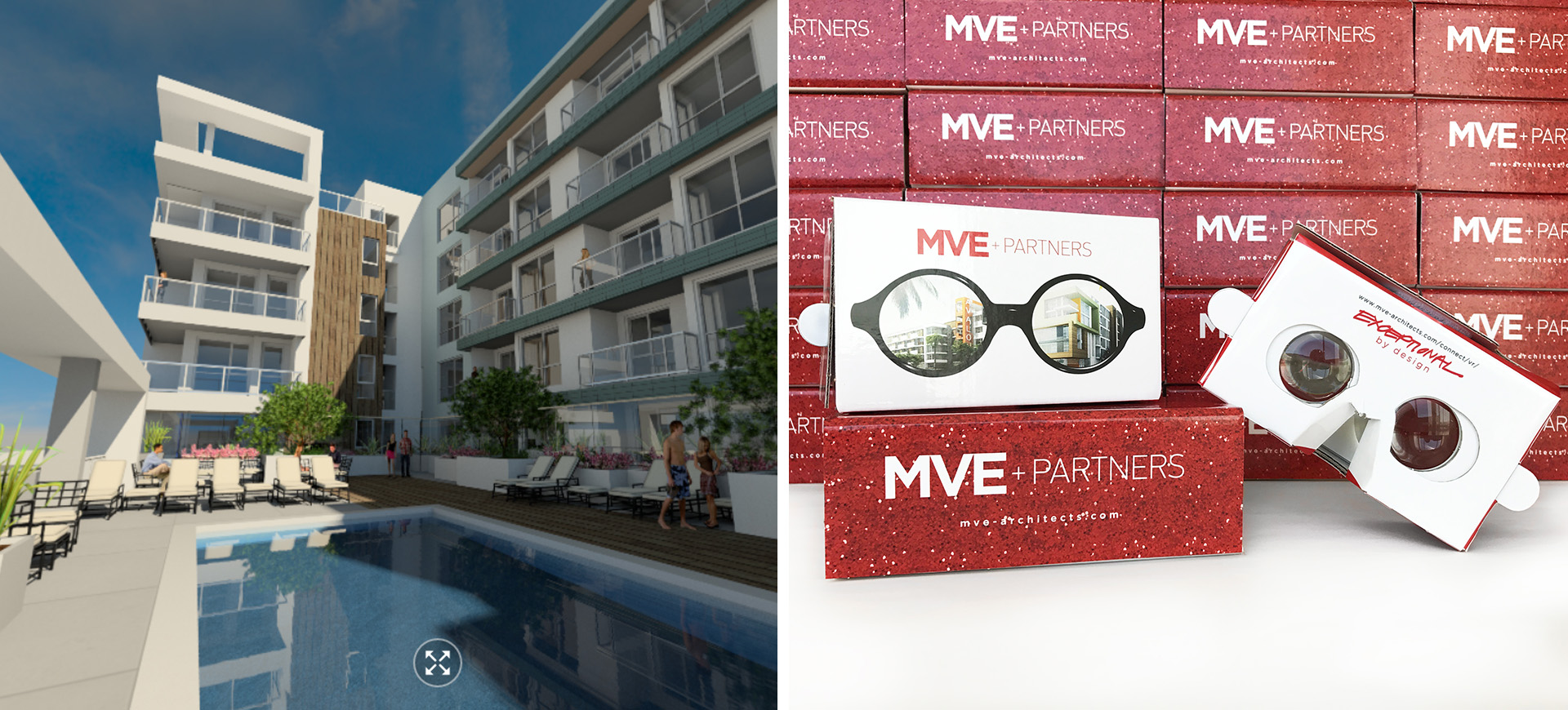By Carrie Rosenfeld for GlobeSt.com.
Irvine, CA — Virtual reality is a tool that can deliver a sense of place and really represent the brand of a property in a way that goes beyond the capabilities of renderings, a brochure or lifestyle video, MVE’s Matt McLarand tells GlobeSt.com.
As architects, MVE helps create the brand of a building—that and the identity of a community goes beyond the design phase and into the marketing phase of the property. McLarand says architects and developers/owners can allow potential buyers to use VR to design their new condo, which directly affects developers’ and owners’ bottom lines.
We spoke with McLarand about how developers and owners can leverage VR to help market and brand their residential properties and how this can impact their bottom lines.
GlobeSt.com: How is VR changing the way developers market their properties?
McLarand: The entire real estate community is intrigued by VR because it’s new and cool and really brings a “wow factor” to any project. It will be key for those in real estate to look past the sheer cool factor and figure out how to leverage the capabilities of VR to achieve measurable business goals.
VR is a tool that can greatly impact and enhance the way developers and owners market their properties. VR has emerged as one of the most sharable marketing tools that allow users to experience a project before it is constructed. Once you have the technology to build completed renderings into a virtual environment, you can share the immersive experience via a QR code or link in email, media stories, on websites, apps, social media and more. It can also be formatted so people who do not have access to VR headsets or Google Cardboards can still view a space in 3D. The viralability of VR is the key to promoting a property quickly and efficiently across a large number of audiences. VR has emerged as another tool in the property marketing materials arsenal; however, the “cool factor” of the technology is what allows it to work harder than any brochure, website, ad or video can.
GlobeSt.com: How are architects using this tool to support the brand of properties?
McLarand: VR is a tool that can deliver a sense of place and really represent the brand of a property in a way that goes beyond the capabilities of renderings, a brochure or lifestyle video. The immersive experience provides the viewer with vivid sensations that cannot be achieved with any other visual tool. Architects bring a developer’s vision to life through the planning and design of a community and can leverage VR to support that identity in a sharable, near‑real experience. With the help of VR, we no longer need to put a narrative behind a rendering; we can simply share a link that transforms the viewer’s office or living room into a place where you can experience true textures, perspective, scale, and experience the activity and surroundings as you walk through a property. It’s energizing and creates a feeling as if you have traveled into the future to experience the personality, vibrancy and identity of the property.
GlobeSt: How will VR impact developers’ bottom lines?
McLarand: With VR, the possibilities are endless and will continually evolve as the technology is fully adopted into the marketplace. Currently, developers can begin marketing their campus or community to potential tenants or buyers as soon as they have finalized a design. This creates the opportunity to virtually experience a property months or even years before there is a physical sense of place established and increases the promotional timeline to potentially increase the amount of space or units leased or sold upon completion of the project. It also allows the developer to market the property effectively to a wider audience, specifically those that are not local to the project. The idea of physically taking the project to a distant audience is one that many real estate professionals have wanted to do for years, and now they can. For example, this immersive experience allows a family on the East Coast looking to move to California to gain a true sense of identity about a property or community without having to spend the time or money to fly across the country. All of these opportunities contribute to potential increases in leasing and sales of units within a community.
GlobeSt: What else should our readers know about VR?
McLarand: VR can do more than just show a property to a potential buyer or tenant. We have used it to help developers provide a decorating tool to potential condo buyers. Car companies have been using a similar tool for years: you can go online and build your favorite car with all of the colors and packages. Now with VR, we can immerse a potential buyer into their future condo to pick wall paint, granite countertop colors, cabinet colors and more. Beyond that, the virtually designed condo can be shared via a link with friends and family through the buying process. This tool energizes buyers and allows them to visualize their new home before they can physically stand it in.
The response we gained from potential buyers when using this tool was overwhelming. The immersive, customizable experience made the condo-buying process so much more personal than anything they had experienced in the past and ultimately led to an increase in sales. The uses for VR and real estate seem to be endless. We are looking forward to continuing to deploy the technology for our clients to help establish a brand for a property, create buzz around new developments and ultimately lease and sell more units.


